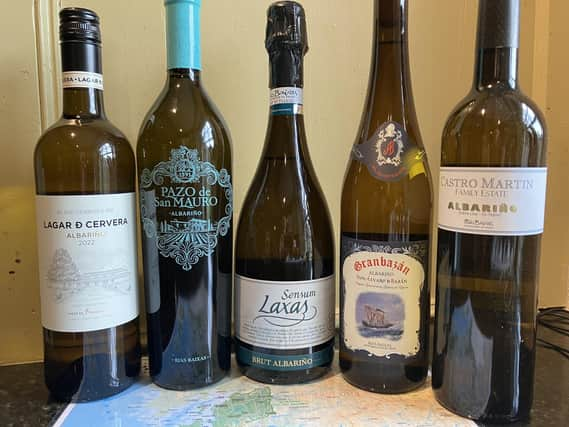Food Friendly Albariño from Rias Baixas


The climatic conditions are quite different to the typical hot Spanish climate further south, due to the proximity of the cold waters of the Atlantic. The Rias Baixas wine region occupies a lush green corridor, and the misty, wind-swept, cool terroir gives rise to wines with crisp acidity, balanced fruit flavours and considerable elegance.
The Rias Baixas region more closely resembles parts of coastal Ireland than ‘typical’ hot, arid, Spain, with more moderate temperatures and rainfall that can be three times the national average. There are five sub-regions of the vineyard area, all dominated by granite which gives a distinctive minerality to the wines. The main differences between the sub-regions are climatic, with varying topography and some differences in soils.
Advertisement
Hide AdAdvertisement
Hide AdTwo of the sub-regions are along the Mino River valley, the vineyards clinging to the steep sides which are terraced. Although there is some commonality of flavours and character of the Albariño wines, with minerality, citrus and peach flavours and in-built elegance, each sub-region gives rise to subtly different wine profiles. The slightly warmer sub-regions have riper flavours, with flavours of golden apples and peaches, and those closer to the sea have a noticeable salinity, sitting alongside the fresh, mineral notes.
As with all varietal wines, not all Albariño wines are the same, although they are all perfect food wines, with some commentators rating them amongst the best white wines of Spain. Apart from the different sub-regions, different winemaking techniques result in individual characteristics. Lagar de Cervera Albarino 2022 is exceptionally fresh and zingy, made with great attention to detail – ripening control of individual plots, refrigerated vehicles transporting grapes to the winery, optical sorting at the winery and cold pressing in an inert atmosphere to prevent oxidation. Price around £20.
Pazo de San Mauro Albarino 2021 has a fuller, broader, silky texture, coming from the warmest of the sub-regions. Highly aromatic and very expressive of the varietal character, resulting from whole bunch pressing. £28 per bottle from Spanish food and wine specialist José Pizarro. A more unusual style of Albariño from Rias Baixas is Granbazan Don Alvaro de Bazan 2019, aged for at least 24 months prior to release, transforming the flavours to a new dimension. From vines grown on the highest part of the vineyard, the struggling vines produce very concentrated flavours from small clusters of very small berries. Delicious full, tropical flavours with notes of caramel and white chocolate. £30 from Hedonism in Mayfair.
Last but not least in terms of style is a sparkling Albariño made by the Traditional Method. Spending between 9 months and 18 months on the lees, the wines are delicately bubbly, with fruity, biscuity aromas and well-defined varietal character. Refreshingly dry with a low dosage. Sensum Laxas is a very good example, with delicate toasted brioche, melon and lime flavours. Look out for Albarino from Rias Baixas when you’re next stocking up and try the different styles.